The characteristics of coffee in Africa-feel the charming acidity of coffee, how to taste it
Professional coffee knowledge exchange more coffee bean information please follow the coffee workshop (Wechat official account cafe_style)
Coffee Xiaobai advanced Level 3, began to accept sour coffee, distinguish various acids, experience acidity, from coffee Xiaobai advanced Level 1 advanced coffee Xiaobai advanced Level 2, slowly began to like to drink African beans. Coffee beans from three continents have their own characteristics. to put it simply, [American beans] have a balanced flavor and taste, not only soft fruit acid, but also nuts and cocoa flavors. [African beans] have a rich flavor of tropical fruits, and [Asian beans] prefer high-quality herbs, spices and caramel with a thick texture.

Many people don't like sour coffee and like coffee that is mellow and even has a strong taste. But if you want to be a coffee taster, the key to getting started is to recognize the acid in coffee. It must be noted that the more sour coffee is, the better. Sweet and sour substances in coffee are components of the complexity of coffee flavor. Some coffee is very acidity, very smack, in the professional cup test can only get a very low score, some coffee although sour, but sweet with sour kind of very comfortable and round acid, will get a higher score.

The acid of coffee
Raw beans contain citric acid, malic acid, quinic acid and phosphoric acid, which are related to sour taste, but these are not the sources of sour taste felt when drinking coffee. The acid caused by baking is the main source of sour taste.
As soon as raw beans are baked, chemical reactions occur in various ingredients, creating new acids. The most representative is the reaction of quinic acid after chlorogenic acid decomposition and the volatile formic acid and acetic acid reaction after oligosaccharide decomposition.
What is the charming sour in coffee?
First of all, the acid in coffee has something to do with the raw bean itself and the degree of roasting. Especially some African coffee, their acidity is soft and bright, such as: sweet, silky smooth, then add some bright acid it will look very plump, with a very rich taste. There are also some coffee in the acid is very exciting, have the feeling of stinging mouth, belong to extremely sour.
If there is no other taste in a cup of coffee except bitter or sour, then this cup of coffee is very bad. So there is an essential difference between sour and astringency. Acid is regarded as acidity when there is saliva on both sides of the middle and back of the tongue after drinking coffee, while astringency is the spicy and noisy feeling on the surface of the tongue, throat and upper jaw after drinking coffee. It's like drinking a cup of coffee with gauze strips.
Astringency is an undesirable taste in coffee. It represents a defective result from raw beans to roasting and even making. A good cup of coffee should not be bitter.
For example, we will say that African beans will have a "bright sour taste" and "fruit sour taste". The wonderful sour taste gives people more rich connotations.
Inferior quality: humic acid, sharp acid, high acidity, smack lips, acetic acid
Quality: fruit acid, fresh acid, round acid, soft acid
African producing area
Flavor characteristics: charming acidity
African bean flavor: Ethiopian coffee has a strong orange flavor, while Kenya coffee has strong raspberry aromas, sour aromas of black plum juice and grapefruit, and sweet sugarcane aromas. The orange aroma of Ethiopian coffee and the raspberry flavor of Kenyan coffee are the most important features of African beans, and they are also the most attractive to coffee fans.
African coffee is generally characterized by strong aroma and charming acidity, its sour brightness is lively and exhilarating, but the mellow African coffee is often slightly thin and the sweetness is not very prominent. African coffee due to drought and lack of water, mostly use the sun method to deal with raw beans, the bean shape is often uneven and beautiful, and the defect rate is high.
[Ethiopia]
Ethiopia is an agricultural country with a history and tradition of coffee origin. Yegashifi and Sidamo represent the overall flavor of Ethiopia, which is a major exporter of Arabian coffee beans in Africa. It has a soft taste, with wild flavor of wine, and slightly sour taste, unforgettable after drinking.
These four major planting systems are distributed in the following nine major producing areas of Ethiopia: Jinma, Sidamo, Yegashifi, Hara, Lim, Iruba, Gimbi (Lekanti), Tibby, and Bebeca.
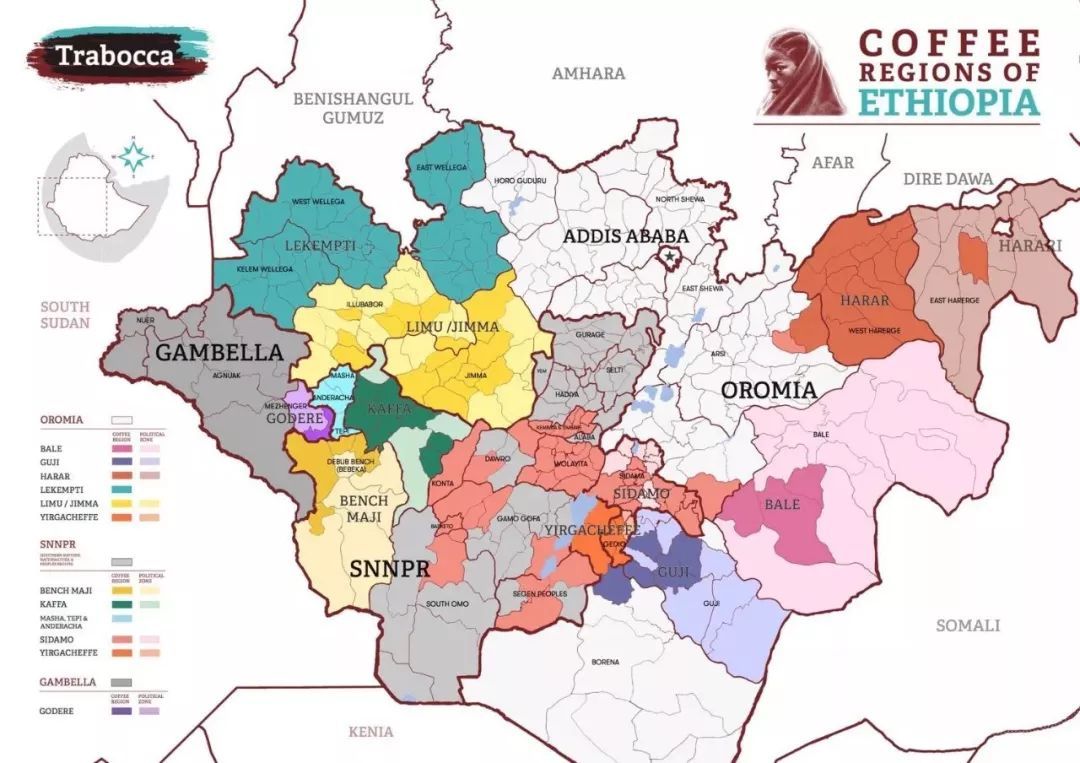
Yejia Xuefei (boutique producing area): 1800m-2000m above sea level | Pastoral coffee system |
Yega Xuefei is affiliated to the Sidamo producing area, which is separated separately because of its unique flavor.
In addition to the small town of Yega Xuefei, it also includes three by-product areas around Wenago, Kochere, Gelena and Abaya.
There are large and small villages, micro-producing areas, cooperatives and treatment stations under Yejashafi. In most parts of Ethiopia, coffee farmers are still living a very difficult life, and they do not have enough capacity to build family-style processing works. as a result, there will be many treatment stations that focus on buying coffee fruits from nearby small farmers, processing them, and then selling them to raw bean merchants. For example, Yega [Red Cherry Project] sun-dried beans, only the red cherry project information, and sometimes get very detailed information about the beans, we can know that this bean comes from a certain village, such as Yega Xuefei [berry orchard], can be traced back to Lot1 Solar G1-Ethiopia Yirgacheffe Kochere Bolje Lot1 Natural G1 in Poli Village, Yega Feikochel Town.
The dry aroma of Yejasuffi exudes strong fruit aromas, with strong aromas of berries, strawberries and straw jam.
Wet fragrance is like sweet syrup, like sticky apricot juice, dried black plum fruit, lemon peel. The entrance is not strong, the alcohol thickness is medium, the acidity is lively and bright, like fruit black tea.
Sidamo (boutique producing area): 1400-2200m above sea level | Pastoral coffee system |
The flavor is similar to Yejiaxuefei, Sidamo, which is delicately washed or sunburned, with the same scent of flowers and oranges.
The Sidamo producing area (Sidama) is located in southern Ethiopia. The industry here is mainly agricultural, and the coffee growing area is located around the East African Great Rift Valley (Great Rift Vallley).
The biggest advantage of the place is that the soil fertility is maintained through the circulation of organic matter, using the withered leaves of the surrounding trees or the residual roots of plants as fertilizer, so the coffee produced in the town has obvious characteristics. Or medium-roasted flavor: wild ginger and bergamot, with blackcurrant notes, grapefruit sweet, Earl black tea comfortable.
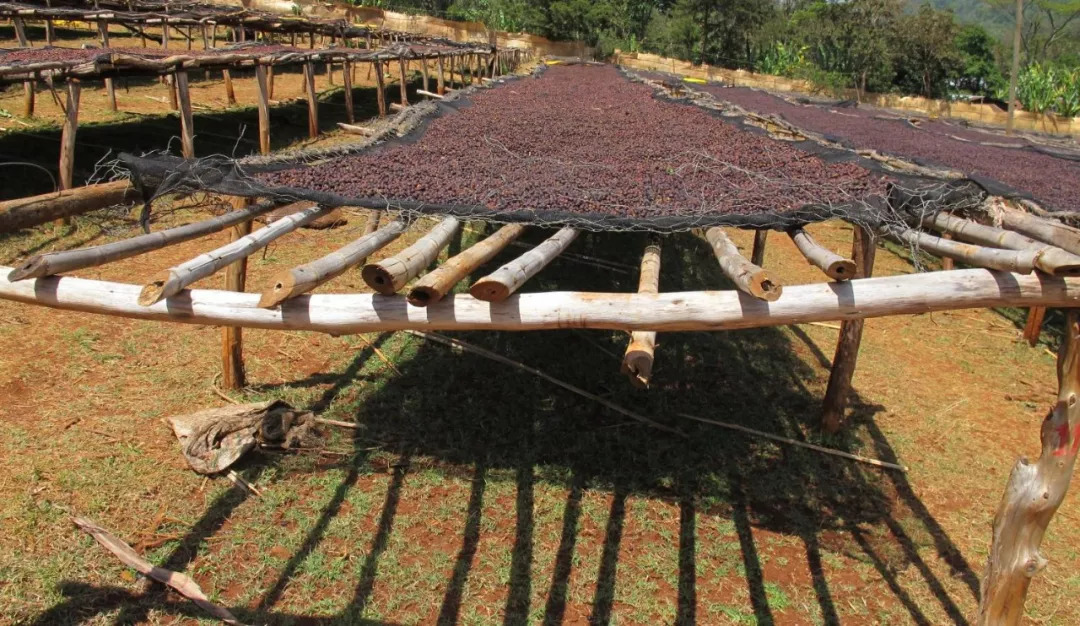
[what is G1]-grading
Coffee beans in Ethiopia are graded according to the proportion of defective beans. Indonesian beans are mainly divided into six grades, namely G1~G6. Ethiopia also uses this method, with the highest grades of washed beans G1 and G2, and those of sun-dried beans G1 and G3.
Washing: Grade-1;Grade-2 (G1 > G2), the coffee flavor treated by water washing is not easy to have wild flavor and has the characteristics of purity and freshness. In some Ethiopian water-washed coffee beans with excellent nature, obvious rising lemon, citrus essential oil, jasmine and honey flavor can be detected, and the sour taste is obvious, mellow and thin.
Almost all of Ethiopia's coffee varieties are local native species, and nearly 2000 varieties have been recorded, of which 1927 are native varieties with a relatively round appearance and small beans. Most of the Esai beans are native species, unlike similar online celebrity faces, they are not selected by botanists, have different shapes, and are often thought to be defective beans. The color is uneven. The baking is uneven. The size is uneven. The mixture of varieties and the uneven size of particles are the reasons for the rich flavor and colorful aroma of Ethiopian coffee.
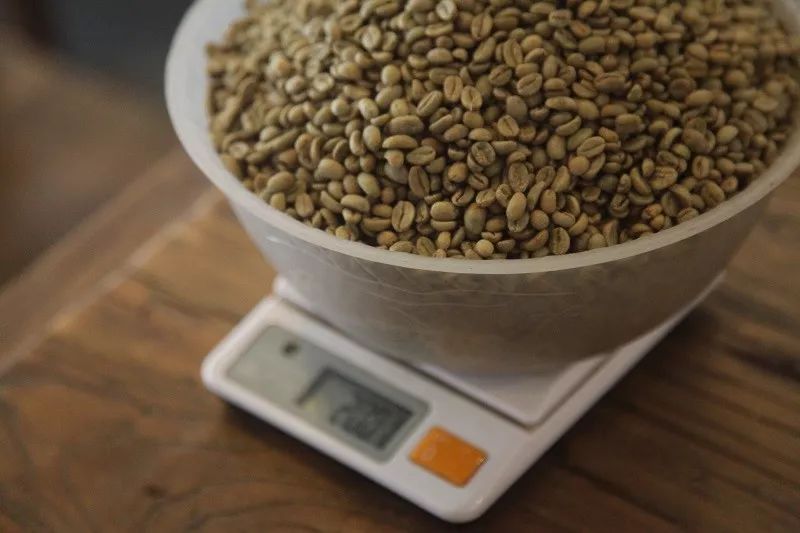
Kenya Kenya
Kenya grows high-quality Arabica coffee beans, which absorb almost the essence of coffee cherries, with a slightly sour, thick aroma, and are very popular among Europeans, especially in Britain. Kenya Coffee surpassed Costa Rican coffee and became one of the most popular coffees.
Kenyan AA coffee is the best coffee in Africa, with a thick and full texture, slightly acidic, smooth taste and slightly alcoholic aroma. AA represents the highest quality coffee beans in Kenya. Coffee cultivation in Kenya is mainly divided into two types: large farms and cooperatives. The former generally has a large planting area and independent coffee processing facilities, and most of the coffee production is completed by a large number of small farmers.
Small farmers form coffee cooperatives. Caffeine in different producing areas has its own subtle flavor due to the difference of microclimate, with rich aroma, bright and dynamic acidity, full and elegant mellow and berry flavor as a whole.
[breed] Kenya [SL28] and [SL34] (bourbon line) were created by Scott Laboratories in 1930, referred to as SL for short. Agronomists wanted to find a pest-resistant and high-yielding bourbon. Through experiments, they obtained SL28, Kenya's high concentration of phosphate soil, which gave birth to the special sour aroma of Kenyan beans and the charming sour taste of plum fruit.
Ruiru11 is the first variety to be approved successfully by the Kenyan Coffee Council, even though boutique coffee buyers are lukewarm about the variety. In recent years, the Coffee Committee has launched another variety called Batian. The quality seems to have improved, and people are optimistic about its future cup performance.
[Kenya-style 72-hour fermentation water washing method] originated in Kenya and adopted the cyclic repeated treatment method of washing after fermentation, which was made after the same day of harvest to select the best quality cherries for peeling and fermentation. the fermentation time is 24 hours, and clean river water is used after 24 hours. Then, it is fermented again with clean river water for 24 hours, then washed, and after 3 cycles, it reaches 72 hours, so it is called Kenyan 72-hour fermentation water washing treatment, referred to as [K72].
Kenyan coffee grades are divided into seven grades according to the size of coffee beans and six grades according to taste. The best coffee in Kenya is bean berry coffee (PB), followed by AA++, AA+, AA, AB and so on. The fine coffee is shiny, delicious and slightly alcoholic.

E: that is, "elephant beans", the size is very large, and the output is relatively small.
AA: this is a more common grade. Coffee beans are larger in size and have a particle size higher than 18 mesh or 7.22mm. This kind of beans usually get the highest price.
AB: this grade coffee bean combines A (particle size 16 mesh or 6.80mm) with B (particle size 15 mesh or 6.20mm); accounts for about 30 per cent of Kenya's annual coffee production.
PB (PeaBerry) round beans: this is the grading for small round beans. This means that there is only one stone in the coffee fruit, not the common two kernels.
Kenya import fresh and clean black Brin, nectarine acidity, good permeability, the acid will bring corn sweet after the temperature drop, the whole is very refreshing.
"Heart of Africa" in Burundi
Burundian coffee will have citrus, berry and flower aromas, a variety of flavors attract people's attention. Bean seeds are mainly bourbon and washed. The geographical environment of Burundi is suitable for growing coffee, the territory is mountainous, has a suitable altitude and climate, and adapts to the production of many small coffee farmers. Most of them are produced by small farmers, and their harvested ripe berries are sent to the treatment plant for unified treatment.
Main producing areas of Burundi
Kayanza, located in northern Burundi and adjacent to Rwanda, produces high-quality coffee.
Ngozi (ngozi), with BlackBerry, drupe flavor.
Makamba (Mpemba), sometimes with the flavor of cream sugar and scented tea.
The coffee processing company of kirimiro, which is close to the central province of Kitega in Burundi, owns the highest washing plant in the country.
The taste is wild, with strong taste and aroma, which is different from most high-quality and mild coffee on the market. The dry aroma is very strong, which is no less than that of Kenya. when you enter the mouth, you can feel very full-bodied, like vanilla, a little wild, the coffee is full-bodied, the acidity is lower, the texture is slightly stronger than Kenya, and the finish is lighter than Kenya. it has the inherent characteristics of East African beans, but it is also quite unique.
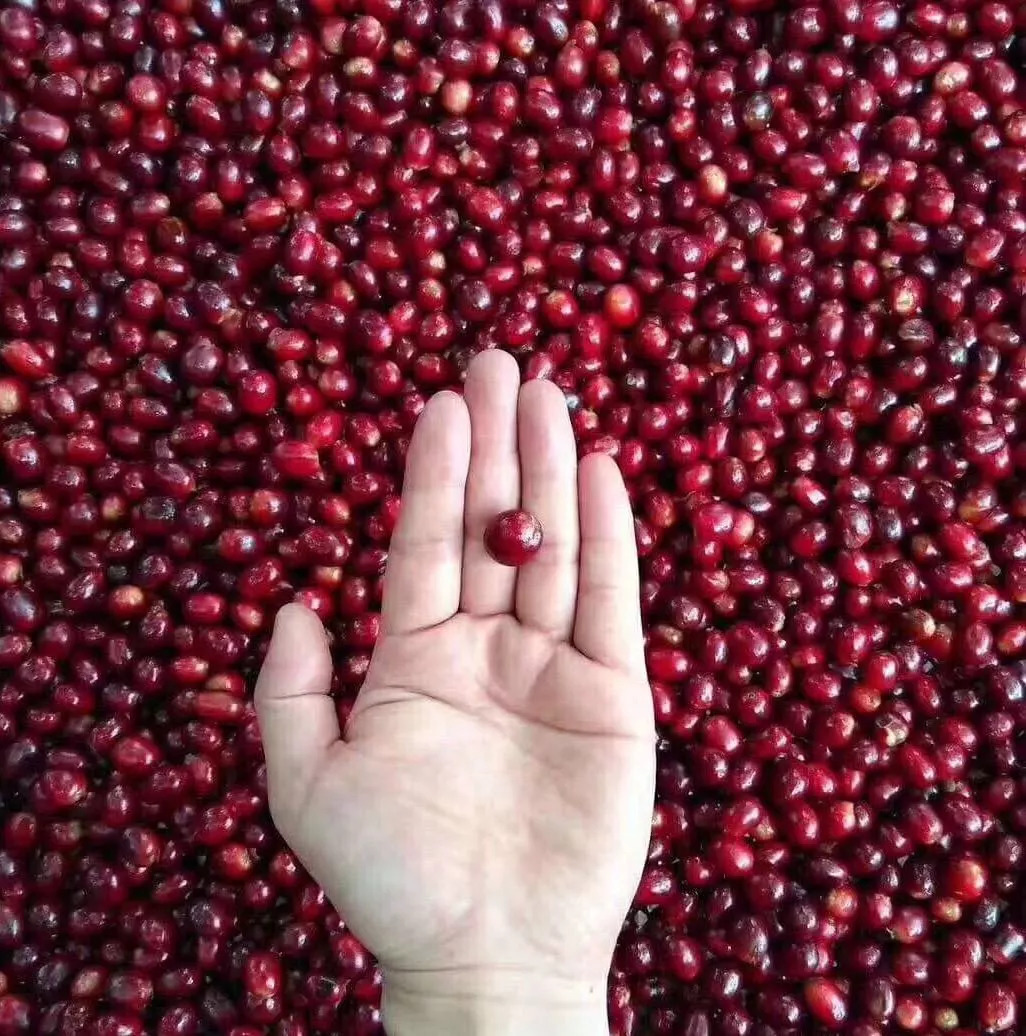
Rwanda
Among the four coffee-producing countries, Rwanda will be more well-known in the country, with many mountains, also known as the "land of a thousand hills." the country's fertile volcanic soil, years of stable rainfall, high altitude and other superior natural conditions, provides a guarantee for the cultivation of coffee beans.
Under such natural conditions, Rwandan coffee beans are of high quality, with special fruit sweetness and rich grass and flower fragrance. Many coffee lovers like Rwandan coffee beans.
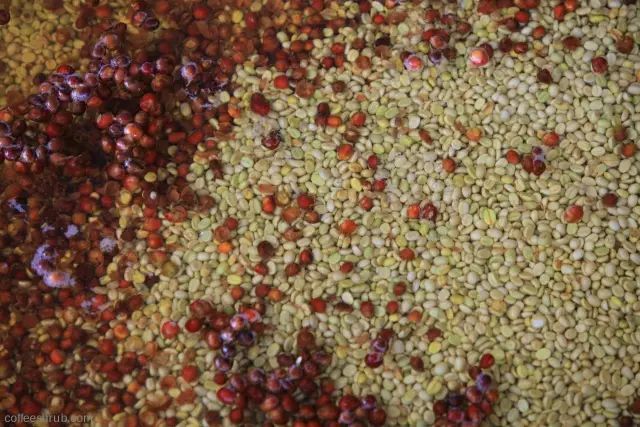
Main producing areas of Rwanda
In the western province (western province), near Lake Kivu (Lake Kivu), there is a famous washing plant in Rwanda, which steadily produces high-quality coffee with rich, fragrant and juicy taste. For example, Rubavu's Nyanyumba produces coe-grade beans with citrus, raspberry, toffee and chocolate flavors.
Northern province (northern province), with citrus, drupe, caramel flavor, more balanced.
In the southern province (southern), coffee beans at high altitudes have floral and citrus flavors. Beans from Nyakibanda green coffee Farm, for example, have tropical fruit, citrus and honey flavors.
In the Eastern Province (eastern province), with fewer coffee gardens and washing plants, coffee has chocolate and fruity aromas.
Lime acid is more obvious, grape juice acidity, rich floral aroma, high acidity, pleasant sweetness, medium mellowness, nut finish, overall purity, mild, smooth texture, balanced and lively layered taste.
Uganda
Every year, major coffee producing countries in Africa hold a national raw bean competition called "The Taste of Harvest; TOH", similar to the Cup of Excellence in Central and South America. TOH has become an arena for discovering the best coffee in Kenya, Ethiopia, Uganda and Congo.
Although Uganda is a big producer of Robusta, there are still good quality Arabica beans such as typica, SL14 and SL28,SL varieties from the research and selection of Scott Lab. Kenyan coffee is famous for SL28 and SL34, so the Ugandan government vigorously promotes and distributes SL seeds to farmers. Among them, SL14 not only has good flavor and drought resistance, but also can be harvested after planting for two years, which meets the needs of farmers.
The grading of coffee is called Q and R by experts. Coffee with a score above 80 is considered a special coffee and will automatically attract a good market or even a better price. Therefore, competition shows that good practices can benefit farmers. As part of its mission, UCDA regularly trains farmers across the country to produce quality coffee through good handling. Therefore, there are areas where high-quality coffee is produced in areas such as Kanungu,Sipi,Iganga and Luwero.
Main producing areas of Uganda
In the western region, Mount mount rwenzoir, the snow-capped Mount Ruwenzori, is located in the west. It has a Ugandan sun-treated Arabica species called 'drugar' with wine, fruity and good acidity.
The small farms of bugisu, Bucky and the elgon Mountains are located between 1600 and 1900m above sea level, and the Arabica beans produced have a thick taste, sweetness and chocolate flavor.
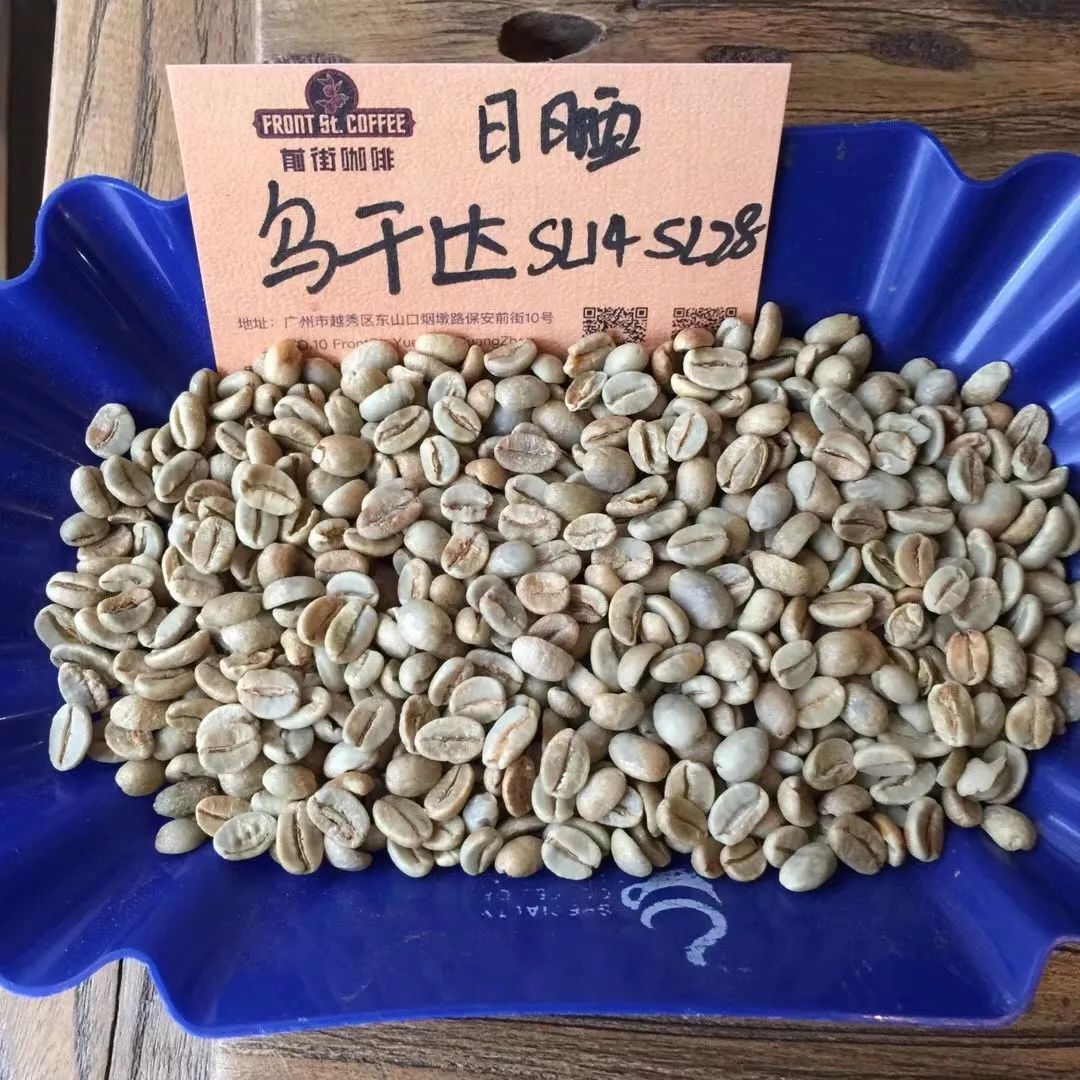
Sweet orange juice, citrus, berries and other fruit flavor, clear and bright acid value, smooth texture, spices, wood, complex taste.
Tasting coffee
When you drink coffee in your mouth, you can feel its flavor. In this respect, many enthusiasts, especially those who are just beginning to come into contact with coffee tasting, always think that coffee doesn't smell good. It is true that the sensory discrimination of coffee liquid in the mouth requires a certain amount of exercise, but over time, the flavor can be detected.
The advanced level of coffee is how to distinguish between sweet, salty, sour and bitter coffee.
The taste of a cup of coffee cannot be simply summed up in the producing country. For fine beans, it is best to divide the producing area to the producing area and manor, because planting techniques and post-processing will lead to differences in taste:
Sakui: wild ginger flower, bergamot, blackcurrant, a variety of tropical fruit acids
Berry orchard: berries, flowers, sour grapes
"the dry aroma of this bean tends to be as elegant as jasmine."
"this Hui Gan is very good! First there is a bit of passion fruit sour, back sweet is also very enough, and finally the final rhyme has some nutty tonality. "
"I still like the cool taste of rose summer, which is sweeter, the taste of peaches, and the sweetness of sweet potatoes."
Gradually, you can taste the bitterness of coffee, there is citrus taste in coffee, the skill of distinguishing taste and aroma, so, step by step, drink while learning, enjoy the fun of fine coffee.
Important Notice :
前街咖啡 FrontStreet Coffee has moved to new addredd:
FrontStreet Coffee Address: 315,Donghua East Road,GuangZhou
Tel:020 38364473
- Prev

Which brand of Indian coffee is good? the origin of Indian coffee beans? how much is Indian coffee beans per jin?
Professional coffee knowledge exchange more coffee bean information Please follow the coffee workshop (official Wechat account cafe_style) when it comes to Asian coffee, most people will first think of Indonesian gold Manning or Toraya, or Vietnamese coffee or Lao coffee, as well as recently rammed up Taiwan coffee, Yunnan coffee and so on. Indian coffee has a long history, and it is also Asia.
- Next
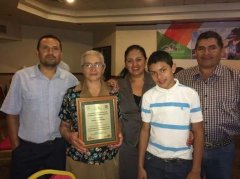
Honduras Sweet Orange Manor | COE Award-winning Sweet Orange Manor with Xinqi Orange flavor
For more information on coffee beans, please follow the Coffee Workshop (Wechat official account cafe_style) [Honduras Sweet Orange Manor] Honduras El Naranjo country: Honduras production area: Makala Marcala altitude: 1425 meters above sea level: Kaduai treatment: water washing 01 | production area introduction Honduras is located in central Central America, bordering the Caribbean Sea to the north.
Related
- Does Rose Summer choose Blue, Green or Red? Detailed explanation of Rose Summer Coffee plots and Classification in Panamanian Jade Manor
- What is the difference between the origin, producing area, processing plant, cooperative and manor of coffee beans?
- How fine does the espresso powder fit? how to grind the espresso?
- Sca coffee roasting degree color card coffee roasting degree 8 roasting color values what do you mean?
- The practice of lattes: how to make lattes at home
- Introduction to Indonesian Fine Coffee beans-- Java Coffee producing area of Indonesian Arabica Coffee
- How much will the flavor of light and medium roasted rose summer be expressed? What baking level is rose summer suitable for?
- Introduction to the characteristics of washing, sun-drying or wet-planing coffee commonly used in Mantenin, Indonesia
- Price characteristics of Arabica Coffee Bean Starbucks introduction to Manning Coffee Bean Taste producing area Variety Manor
- What is the authentic Yega flavor? What are the flavor characteristics of the really excellent Yejasuffi coffee beans?

